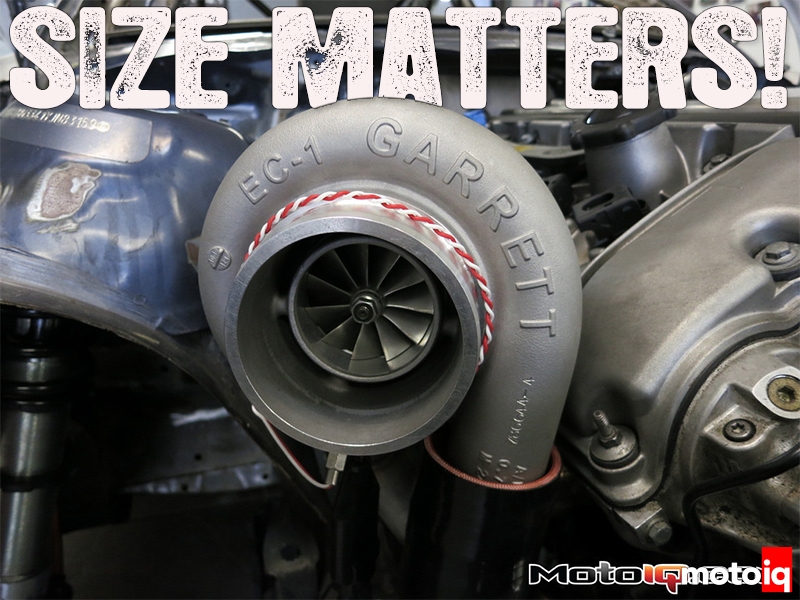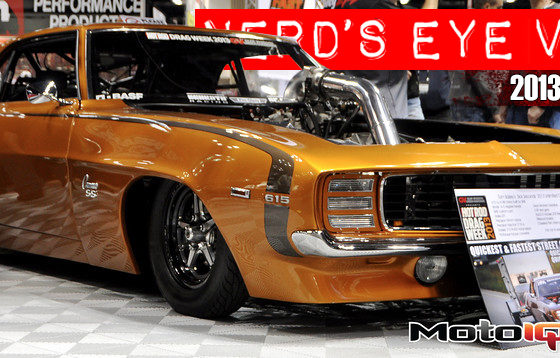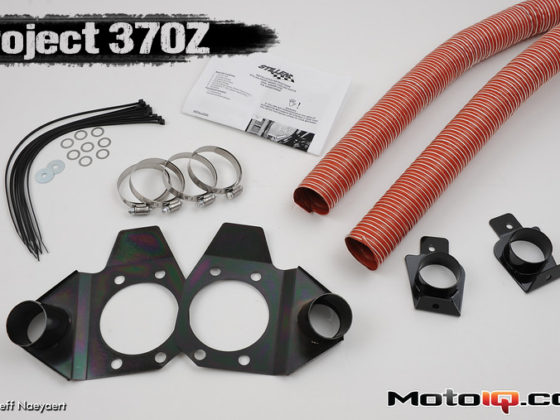,
 I used my magical Power Point skills to put together this quick and dirty turbo sizing chart based on engine displacement and intended use. There is a range of turbo sizes for each intended use for each size engine due to differing engine characteristics. For old school 2.0L engines like the SR20 and EJ20, a GT28 size turbo is actually starting to get a bit laggy for street use. On a more modern engine like an F20c or 4B11, a GT28 is really too small. Project Evo X has the turbo sized in the area of being a street/road course car being 2.0L displacement with a GT30 size turbo.
I used my magical Power Point skills to put together this quick and dirty turbo sizing chart based on engine displacement and intended use. There is a range of turbo sizes for each intended use for each size engine due to differing engine characteristics. For old school 2.0L engines like the SR20 and EJ20, a GT28 size turbo is actually starting to get a bit laggy for street use. On a more modern engine like an F20c or 4B11, a GT28 is really too small. Project Evo X has the turbo sized in the area of being a street/road course car being 2.0L displacement with a GT30 size turbo. Say you have a Boss 302 Mustang with a 5.0L V8; well, a pair of GT30s looks pretty good for a street/road course car. Using the quick and dirty math, let’s estimate some power for this kit. A stock Boss 302 will put down about 415whp on a Dynojet on 91 octane. So if you run 14.7 psi of boost for a pressure ratio of 2.0, you’ll double the power output to 830whp.
Say you have a Boss 302 Mustang with a 5.0L V8; well, a pair of GT30s looks pretty good for a street/road course car. Using the quick and dirty math, let’s estimate some power for this kit. A stock Boss 302 will put down about 415whp on a Dynojet on 91 octane. So if you run 14.7 psi of boost for a pressure ratio of 2.0, you’ll double the power output to 830whp.The other big question that everyone asks is how much power is a turbo good for? I have developed a rule of thumb for this after a lot of observation based on the compressor flow and fuel type based on a few assumptions. On 91 octane, I would expect about 7whp per pound a minute of compressor flow. 93 octane is around 8whp per lb/min airflow. Race fuels and E85 will typically do about 9whp per lb/min. One of the assumptions is the whp number is based on typical Dynojet numbers. Another assumption is port fuel injection and not direct injection; direct injection cars like all the VW and Audi engines make significantly higher power numbers. Adding another rule of thumb to a rule of thumb, direct injection adds in the ballpark or 0.5-1.0whp per lb/min of airflow over the port fuel injection values. The last key assumption is a well matched turbine stage (turbine wheel size and turbine housing A/R) to maintain good volumetric efficiency at higher engine speeds. If you pair a big compressor with a tiny turbine in a tiny A/R turbine housing, you will not get much power.
Let’s look at the Boss 302 again and examine it with the base Garrett GT3076R turbos which do about 55lbs/min. Assuming the car is run on 91 oct and using my 7whp per lb/min rule of thumb, it will do about 770whp. Remember the car does about 415whp naturally aspirated on a Dynojet. So using a bit more math we used before in reverse, we can determine the required pressure ratio is (770/415) = 1.86. A pressure ratio of 1.86 equals a gage boost pressure of about 12.6psi assuming an ambient air pressure of 14.7psi. This boost pressure is in the ballpark of the limit you would want to run on 91 octane on a naturally aspirated engine with boost added. For reference, a S2000 with the same size turbo will typically run about 11-12psi on 91 octane. There are a lot of variables that come into play such as the design of the manifold and exhaust, but these are all just ballpark figures. The max power potential of the kit with GT3076R turbos would be using race fuel, so 55lbs/min per turbo times 9whp per lb/min of compressor airflow gives about 990whp. Motiva Performance says the kit is 1200 crank horsepower capable, so assuming a 15% drivetrain loss with the 990whp puts us really darn close to 1200hp crank (1165hp for those of you who didn’t do the calculation yourselves). It’s nice when the math works out isn’t it? Of course, a pair of GTX3582Rs can be used on this kit with each turbo flowing up to 76 lbs/min which works out to 1370whp on race gas using the 9whp per lb/min rule of thumb. I have seen the GTX3582R pushed to 750-800whp, but that’s pretty extreme.
The last thing I am going to cover related to turbo sizing is the concept of picking the smallest turbo to meet your power target. If you are only aiming for 400whp, it is a horrible idea to select a big turbo good for 700whp as its resulting powerband will be very laggy. Sometimes, your horsepower limit is due to the mechanical strength limitations of the engine or some drivetrain component. In the following case, the Novak time attack Subaru was limited to about 600hp.
 Novak started with a Garrett GTX3582R which is a 700+whp capable turbo because that’s what he had laying around the shop. However, he was mechanically limited to about 600whp due to fears of destroying parts at higher power levels. I’ll define the powerband for this engine setup as being over 400 lb-ft of torque as that is where the engine torque falls to at redline. With the GTX3582R, the powerband was from about 4500-7300rpm. Obviously the turbo was too big, so it was replaced with the smaller GTX3576R. As you can clearly see, the torque and horsepower curves are exactly the same above 5000rpm, but the GTX3576R increased the powerband about 700rpm making it about 25% wider! Project 370Z owner Clint Boisdeau is the driver for this car and he noted the car was significantly easier and faster to drive due to the wider powerband.
Novak started with a Garrett GTX3582R which is a 700+whp capable turbo because that’s what he had laying around the shop. However, he was mechanically limited to about 600whp due to fears of destroying parts at higher power levels. I’ll define the powerband for this engine setup as being over 400 lb-ft of torque as that is where the engine torque falls to at redline. With the GTX3582R, the powerband was from about 4500-7300rpm. Obviously the turbo was too big, so it was replaced with the smaller GTX3576R. As you can clearly see, the torque and horsepower curves are exactly the same above 5000rpm, but the GTX3576R increased the powerband about 700rpm making it about 25% wider! Project 370Z owner Clint Boisdeau is the driver for this car and he noted the car was significantly easier and faster to drive due to the wider powerband. These are the boost curves comparing the GTX3576R and GTX3582R. As you can see, the GTX3576R does require a little more boost to make the same peak torque and power numbers as the GTX3582R, but for this particular setup and power constraints, the GTX3576R provides a much wider powerband making for a faster car. In case you were wondering, the dynos are from Church Automotive Testing.
These are the boost curves comparing the GTX3576R and GTX3582R. As you can see, the GTX3576R does require a little more boost to make the same peak torque and power numbers as the GTX3582R, but for this particular setup and power constraints, the GTX3576R provides a much wider powerband making for a faster car. In case you were wondering, the dynos are from Church Automotive Testing.So there you have it, the quick and dirty to turbo sizing. Oh yeah, the easiest way to know what a turbo will do on your engine is to see what at least three other guys with the same engine and mods are doing with whatever turbo you’re looking to try. I say three because, let’s face it, many builds have issues the first time around whether it be boost leaks, not enough spark, exhaust leaks, fueling or tuning issues, all sorts of unplanned things that affect power production. The key concept to take away from this article is to know exactly how you intend to use the car and the required powerband. From there, you can narrow down your turbo selection and fine tune your selection based on what others have done. If you can’t find anyone with a similar setup, you can use the rules of thumb I came up with to determine about how much power you can expect from a specific turbocharger.
Remember, this is all stuff to get you in the ballpark. Power will be a function of volumetric efficiency and that changes with intakes, head work, exhaust, cams, cats, air filters, valves… you get the idea.
And for even more accurate turbo matching, go to these two sources:
Other related turbo tech articles
An Inside Look at the New Garrett GTX Turbochargers
Turbo Tech: Generating Compressor and Turbine Maps
Turbo Tech: Compressor and Turbine Map Details
Turbo Tech: Intercooler Testing



